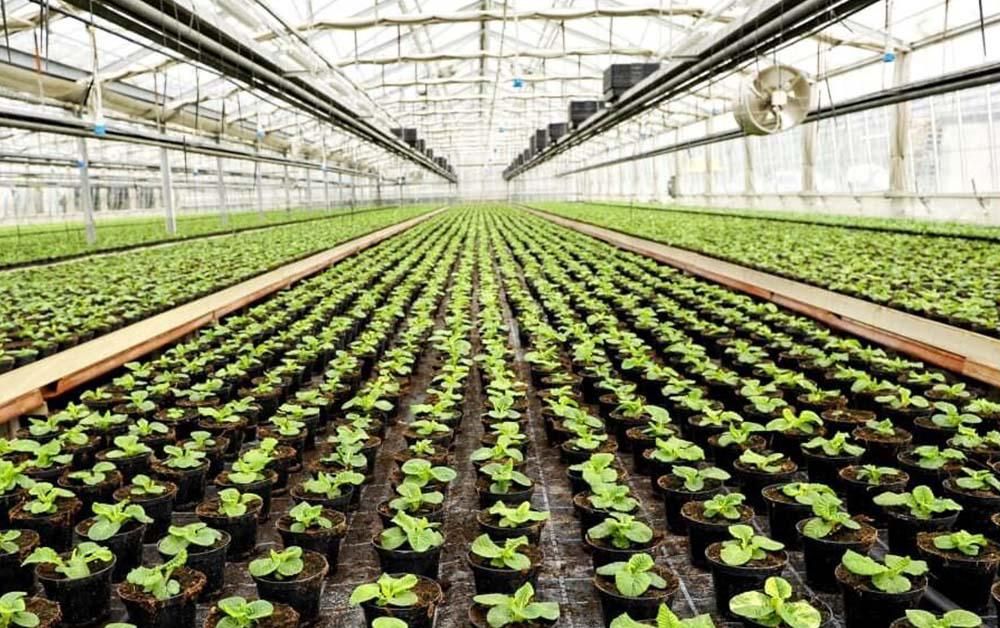While large, commercial operations are the focus of much of the hype around indoor farming, everyday gardeners can find inspiration from it. Growing food inside saves resources enables year-round growth and gives you complete control over the growing process.
Indoor Farming: What is it?
Indoor farming refers to farming done inside a building. It consumes less water than outdoor growing and does not require heavy machineries like tractors or combines. Instead, it uses other techniques to grow food indoors, such as cameras and software.
While growing plants indoors in a structure like a greenhouse is widespread, cultivating leafy greens on a modest scale is more akin to gardening.
The ability to optimize the growth process for greater yields is indoor farming's largest benefit. All the risks associated with growing outside, like droughts, storms, and pest infestations, are eliminated. Instead, growers have complete control over everything, down to how much light plants receive minute by minute.
Types of Indoor Farming
Vertical Farming:
Food is grown vertically when levels are layered one on top of the other and upward. This kind of indoor farming necessitates a sizable, tall building, a lighting system, a mechanism to ensure every plant receives the water and nutrients it requires, and some monitoring system, such as sensors or software.
Several tiers of plants typically grow at once on vertical farms. This method of growing plants has the advantage of allowing farmers to grow a lot more food per square foot of land than they could if they were only growing one layer outside. Vertical farming, for instance, enables people to produce a lot more crops on numerous layers than they could if simply used the area for one layer, say, a 25,000-square-foot building.
Hydroponic Farming
Hydroponic farming is farming in which plants are grown without the use of soil. It is a popular method of producing food. Instead, plants are raised in a water and fertilizer solution.
Plants don't need to "seek out" nutrients in the soil when they are grown hydroponically. Instead, the roots are entirely surrounded by nutrients making it much simpler to absorb what they require. Compared to growing in dirt, this results in the plants growing more quickly and in greater quantities. Higher fresh product yields are frequently the result of this method.
Due to the lack of dirt, it is cleaner than soil growing, but it also requires a lot of energy. The different pumps and other gear required for hydroponic systems typically use a lot of electricity.
Types of Food That Can Be Grown Indoors
While many vegetables and fruits have proven remarkably simple to produce indoors, whole grains like barley and wheat are still cultivated outdoors in vast fields.
Cucumbers, herbs, lettuce, peppers, strawberries, and tomatoes are among the fresh produce that is routinely grown "under protection," which includes indoor farming, according to the National Agricultural Statistics Service, a division of the United States Department of Agriculture.
The Advantages of Indoor Farming
Indoor farming has several benefits over traditional farming practices.
It uses less land
Compared to a single outside field, a vertical farm can grow a lot more plants on a given amount of ground. This can be quite beneficial in densely populated areas where there may not be a lot of desert land for agriculture.
Urban agriculture
Vertical farms in particular don't need a lot of open space to function within. Urban locations with vacant, outdated industrial buildings are ideal locations for indoor agriculture.
Urban agriculture may slow down the effects of climate change by allowing farmed land to rewild.
Year-round yields
Indoor farms can grow food 365 days a year without being affected by the weather. For plants, no amount of cold, snow, or wind is ever too much. Growing food indoors entails being part of a food system that is not influenced by climate change.
Decreased transportation
Indoor agriculture not only enables year-round cultivation. In addition, the production of food in areas where it wouldn't typically grow reduces the need for food transportation.
Crops can be grown right in the midst of a city, eliminating the need to transport food there. It is now possible to grow the food there rather than needing to ship it into arid, hostile areas or extremely cold areas.
Food stays fresher for longer periods of time and is wasted less when the amount of time spent traveling is reduced.
Healthier and more abundant crops
Farmers may grow healthier and more plentiful crops by being able to maximize every aspect of a plant's growth cycle, from the number of nutrients they receive to the amount of light they receive.
Is Indoor Farming really the future of Farming?
Indoor agriculture has the potential to transform the whole agricultural sector since it can produce wholesome, abundant food year-round, almost everywhere. According to Astute Analytica's report, global indoor farming will grow at a CAGR of 10.1% from 2022 to 2030.
It is likely that every urban area will house at least one indoor farming enterprise in the near future. The worldwide indoor farming market will experience growth during the forecast period due to the reduced impact of outside weather conditions and increased demand for fresh foods with high nutritional values. In addition to reducing agricultural land consumption and enabling agricultural growth without expansion, indoor environments also permit the use of no pesticides and year-round cultivation regardless of the weather.
If food can farm locally and moved simply a short distance from one building to another, or even just from one level to another, there will be less need to carry it over great distances.
Instead of being dominated by colossal, industrial mega-farms that produce mountains of waste, indoor farming might bring agriculture back to its beginnings as small, highly localized activities. Additionally, such enterprises will have the advantage of being able to offer locally grown produce throughout the year.






 The minimum wage is not a living wage.
StableDiffusion
The minimum wage is not a living wage.
StableDiffusion
 influential nations
StableDiffusion
influential nations
StableDiffusion












